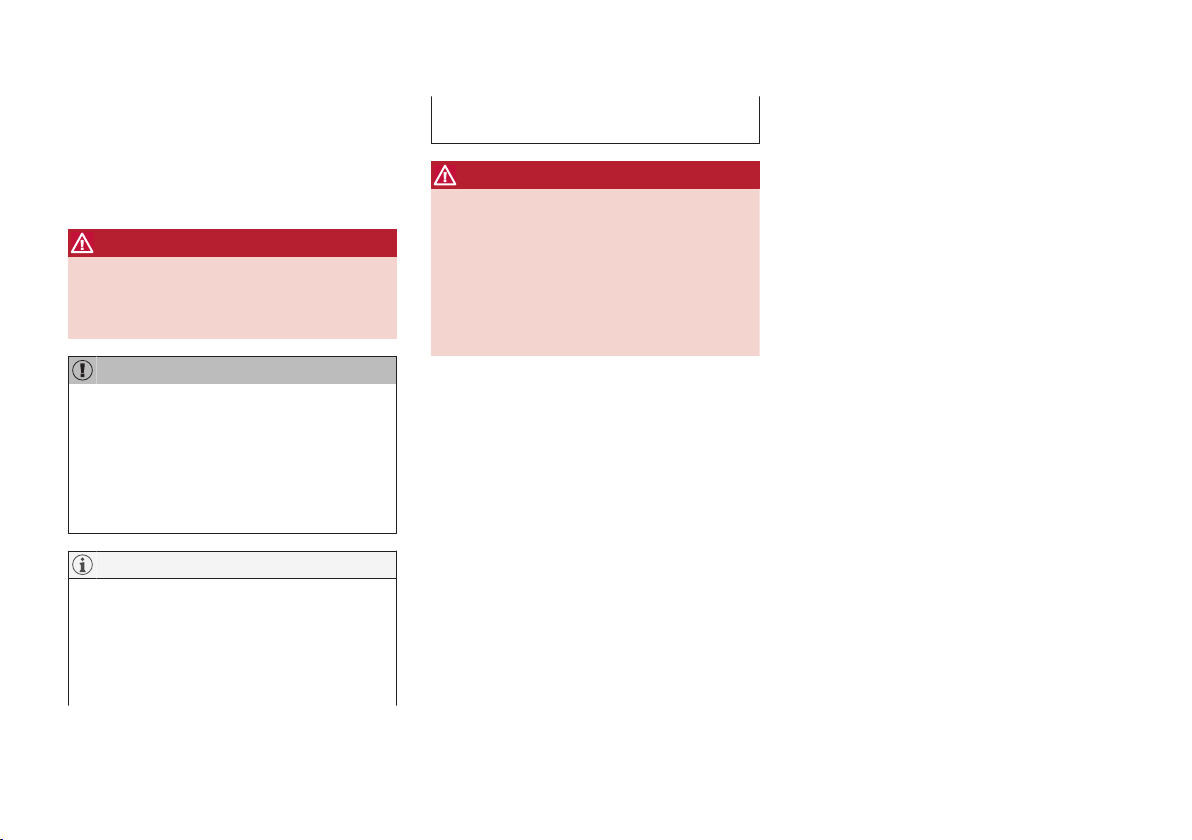Loading ...
Loading ...
Loading ...

||
WHEELS AND TIRES
492
14. Immediately drive the vehicle for approxi-
mately 2 miles (3 km) at a maximum speed
of 50 mph (80 km/h) to distribute the seal-
ing compound in the tire. During the tire's
first revolution, some sealing compound may
spray out of the puncture hole.
WARNING
No one should stand closer to the vehicle
than approx. 7 ft (2 m) when it drives away to
help avoid being sprayed with sealing com-
pound.
CAUTION
If your vehicle is equipped with the Tire Pres-
sure Monitoring System (TPMS), the use of
the sealing compound may lead to incorrect
tire pressure readings or in rare cases, dam-
age to the tire pressure sensor. Use the tire
sealing system to check and adjust the dam-
aged tire's inflation pressure.
NOTE
•
Safely stow the tire sealing system in a
convenient place as it will soon be used
again to check the tire’s inflation pressure.
•
The empty bottle of sealing compound
cannot be removed from the bottle holder.
Consult a trained and qualified Volvo serv-
ice technician to have the bottle removed
and properly disposed of.
WARNING
If heavy vibrations, unsteady steering behavior,
or noises should occur while driving, reduce
speed and park the vehicle in a safe place.
Recheck the tire for bumps, cracks, or other
visible damage, and recheck its inflation pres-
sure. If the pressure is below 19 psi (1.3 bar),
do not continue driving. Have the vehicle
towed to a trained and qualified Volvo service
technician.
15.
Rechecking the pressure
Reconnect the tire sealing system's hose to
the tire's inflation valve.
16. Without starting the compressor, check the
inflation pressure on the air pressure gauge.
•
If the pressure is under 19 psi (1.3 bar),
the puncture has not been sealed suffi-
ciently and the vehicle should not be
driven. Have the vehicle towed to a trained
and qualified Volvo service technician.
•
If the pressure is more than 19 psi
(1.3 bar), connect the electrical wire to a
12-volt socket, start the compressor and
inflate the tire to the correct pressure
(see the tire pressure decal on the on the
driver's side B-pillar (the structural mem-
ber at the side of the vehicle, at the rear
of the driver's door opening). Use the air
release valve to release some air from the
tire if necessary.
17. Switch off the compressor and disconnect
the electrical wire from the 12-volt socket.
Unscrew the hose from the tire’s inflation
valve and reinstall the valve cap.
Do not attempt to remove the sealing com-
pound bottle from the tire sealing system. It
cannot be turned counterclockwise.
18. Fold the hose into the sealing system box
and return the components to the cargo
compartment.
Loading ...
Loading ...
Loading ...